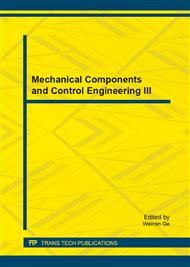p.1538
p.1542
p.1546
p.1550
p.1557
p.1561
p.1565
p.1569
p.1573
An Initial Investigation of Hip Joint Contact Behaviour Using Advanced Non-Linear Finite Element Methods
Abstract:
The hip implant is a very successful treatment for serious osteoarthritis, especially in older patients, but less desirbale for earlier interventions. There is a growing consensus that most hip arthritis is due to shape abnormalities that cause impingement at the ball and socket, collectively called femoroacetabular impingement (FAI). The ball does not fit accurately into the socket, leading to premature wear, and then destructive arthritis. It is not then necessary to replace the whole hip joint; newly developed surgical techniques that accurately reshape the bones to relieve impingement and reduce wear have been shown to be effective. This surgery can be performed with a conventional open approach, or be arthroscopic (keyhole) surgery. It would be better to reshape bones to suit each individual patient. Finite element methods (FEM) have been widely used for biomechanical studies of hip implants and periacetabular osteotomy, but hardly at all in hip reshaping. Non-linear FEM is employed in the current study to perform biomechanical evaluations of differences in contact pressure between normal and arthritic hip joints to help basic understanding and lead to more accurate surgery. The hip joint bone structure is obtained through a medical CT scan and then the CT images have been converted into a format readable by FEM solvers. A sophisticated non-linear contact model of the hip joint bringing together the interactions of true geometry, natural movement and contact forces has been established using this advanced FEM.
Info:
Periodical:
Pages:
1557-1560
Citation:
Online since:
October 2014
Authors:
Price:
Сopyright:
© 2014 Trans Tech Publications Ltd. All Rights Reserved
Share:
Citation:


